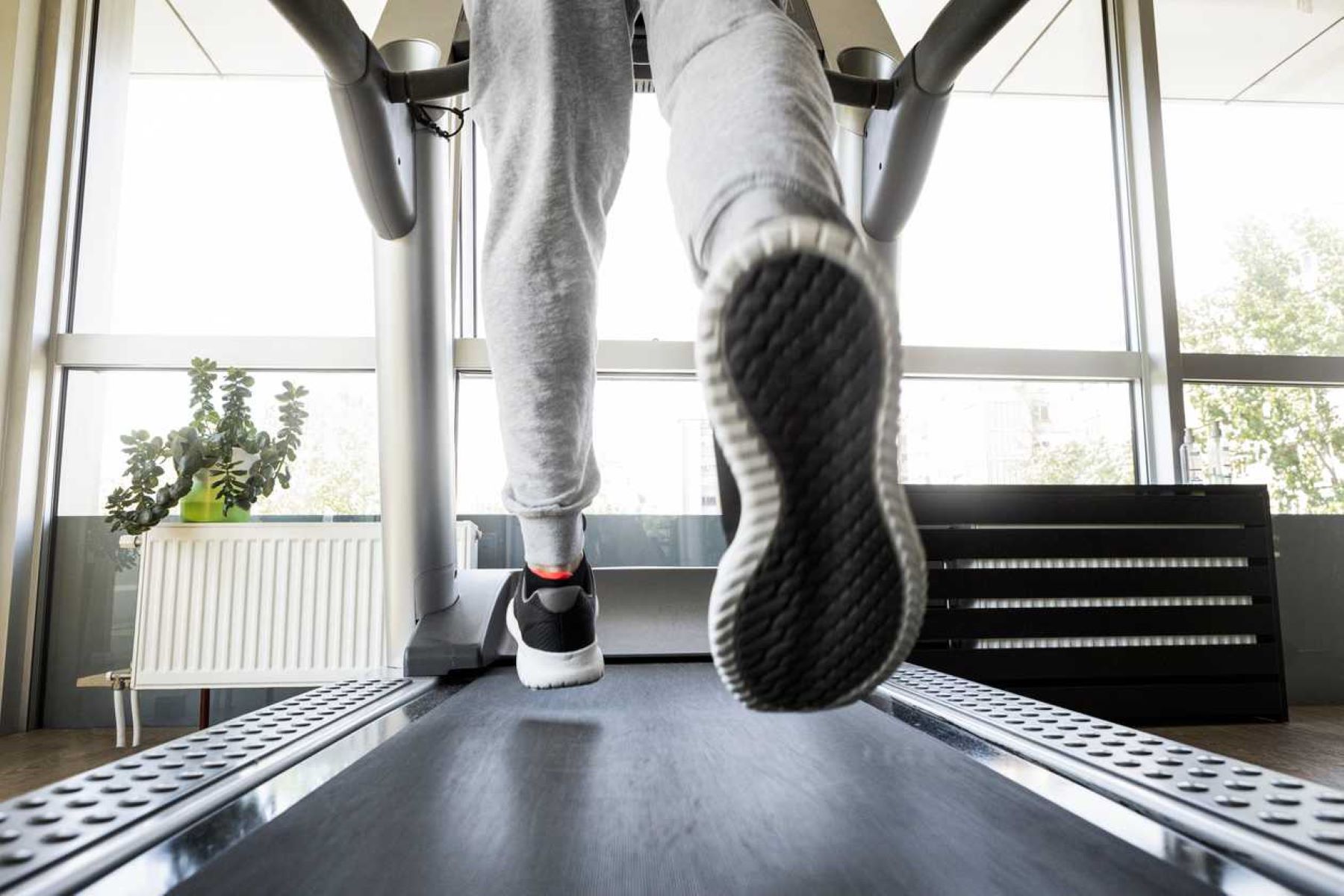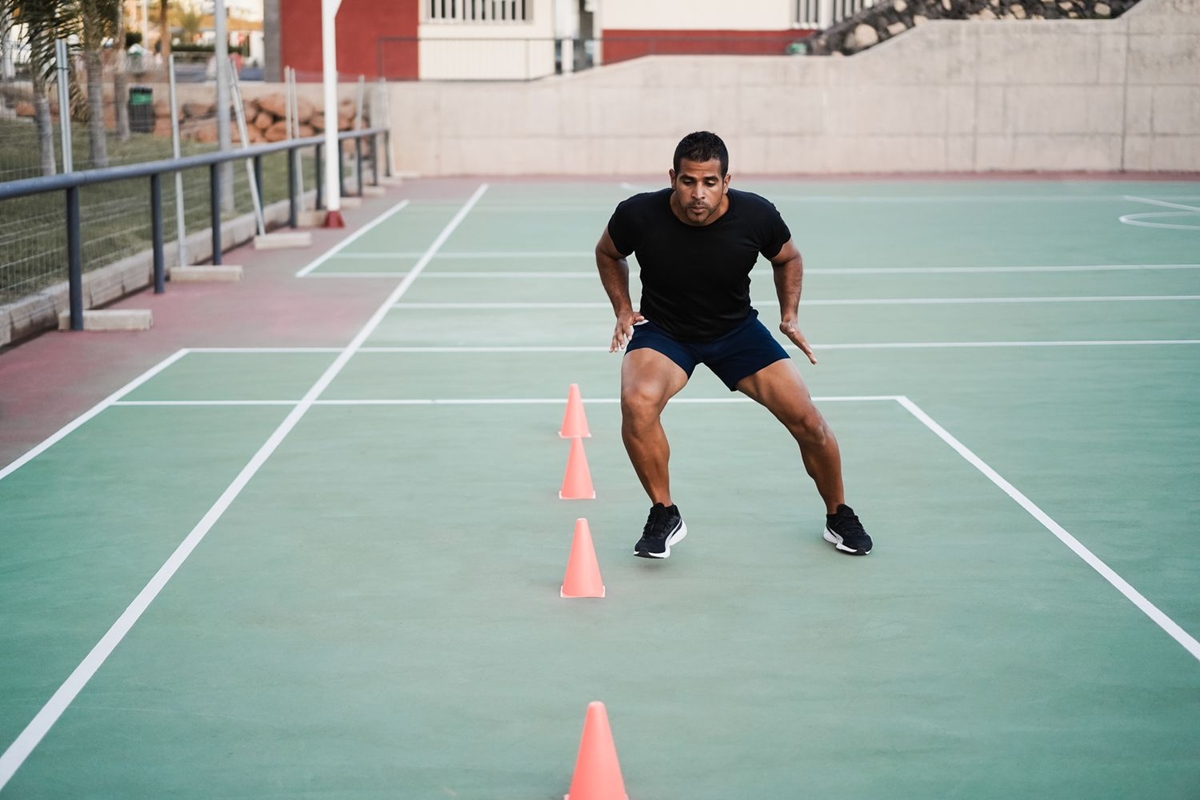

Featured
What Fitness Component Is Jogging
Modified: August 21, 2023
Discover the featured fitness component of jogging and its incredible benefits for your overall health and well-being. Learn why jogging is the perfect exercise to elevate your fitness level and achieve your goals effortlessly.
Introduction
When it comes to maintaining a healthy lifestyle, regular exercise is key. And one form of exercise that has gained immense popularity is jogging. Jogging is more than just a simple activity; it is a complete fitness component that offers numerous benefits for the body and mind.
Jogging involves running at a comfortable pace, typically slower than sprinting but faster than walking. It is a versatile form of exercise that can be done practically anywhere, whether it’s outdoors in nature, at the gym on a treadmill, or even in the comfort of your own home on a stationary jogger.
What makes jogging so effective as a fitness component is its ability to target multiple areas of fitness simultaneously. It is a perfect blend of cardiovascular endurance, muscular endurance, body composition, and flexibility. By incorporating jogging into your exercise routine, you can improve your overall fitness and reap the rewards of a healthier and stronger body.
In this article, we will explore the different components of fitness that are enhanced through jogging. We will delve into the cardiovascular component, which boosts heart health and increases stamina. We will discuss how jogging improves muscular endurance by working the major muscle groups of the body. Furthermore, we will explore how jogging can contribute to achieving a healthy body composition and enhancing flexibility.
So, if you are ready to lace up your running shoes and embark on a journey to better fitness, let’s dig deeper into the incredible fitness components that jogging has to offer!
Definition of Jogging
Jogging is a form of aerobic exercise that involves running at a moderate intensity. It is characterized by a steady pace that is faster than walking but slower than sprinting. Jogging is often done for longer durations, making it an effective endurance exercise.
Unlike running, which typically involves a faster pace and more intense exertion, jogging is a more manageable and sustainable form of exercise for people of various fitness levels. It allows individuals to maintain a steady rhythm and engage in a continuous motion that helps to improve their cardiovascular fitness.
It is important to note that the concept of jogging is subjective and can vary from person to person. What may be considered jogging for one person could be running for another, depending on their fitness level, pace, and individual capabilities.
Jogging can be performed both outdoors and indoors. Outdoor jogging offers the added benefit of being able to explore natural surroundings, enjoy fresh air, and vary the terrain. This can add excitement and diversity to the exercise routine. Indoor jogging, on the other hand, can be done on a treadmill or stationary jogger, providing convenience and control over factors such as speed, incline, and workout duration.
Regardless of the setting, the primary objective of jogging remains the same: to engage in a consistent and rhythmic movement that elevates the heart rate, improves lung capacity, and enhances overall fitness.
Overall, jogging is a versatile and accessible form of exercise that can be enjoyed by people of all ages and fitness levels. It offers numerous physical and mental benefits and can be easily incorporated into a daily routine. Whether it is a brisk morning jog through the park or a relaxing evening jog on the treadmill, this activity holds the potential to transform your fitness journey.
The Cardiovascular Component of Jogging
Jogging is renowned for its ability to enhance cardiovascular fitness. When you jog, your heart rate increases, and your body demands more oxygen to sustain the activity. This leads to improved cardiovascular endurance over time.
Regular jogging strengthens your heart, making it more efficient at pumping blood. This, in turn, improves blood circulation throughout the body, delivering oxygen and nutrients to your muscles more effectively.
Engaging in cardiovascular exercise like jogging also stimulates the production of new blood vessels. This process, known as angiogenesis, helps to increase the network of blood vessels in your body, improving overall blood flow and reducing the risk of heart-related diseases.
Jogging also has positive effects on your respiratory system. When you jog, your breathing rate increases, allowing your lungs to take in more oxygen. This process strengthens your lung capacity, making your respiratory system more efficient at supplying oxygen to your body’s tissues.
One of the most significant benefits of improving cardiovascular fitness through jogging is the boost it provides to your stamina and endurance. As you continue to jog regularly, you will notice that activities that once left you feeling breathless and fatigued become easier to perform. This increased endurance can have a positive impact on various aspects of your life, allowing you to engage in physical activities with greater ease and enjoy a higher overall level of fitness.
Incorporating high-intensity interval training (HIIT) techniques into your jogging routine can further maximize the cardiovascular benefits. By alternating between periods of intense sprinting and recovery jogs, HIIT can help improve your cardiovascular fitness and increase your body’s capacity to handle intense physical activities.
Remember, consistency is key when it comes to improving cardiovascular fitness through jogging. Aim for at least three to five sessions of jogging per week, gradually increasing your intensity and duration over time. With patience and dedication, you will witness the remarkable transformation of your cardiovascular endurance and overall fitness.
The Muscular Endurance Component of Jogging
While jogging is primarily known for its cardiovascular benefits, it also plays a significant role in improving muscular endurance. Muscular endurance is the ability of a muscle or group of muscles to sustain repeated contractions over an extended period.
When you jog, several major muscle groups in your body are engaged. The primary muscles worked during jogging include the quadriceps, hamstrings, calves, glutes, and core muscles. These muscles work together to propel your body forward and maintain balance and stability throughout the movement.
With regular jogging, these muscles are subjected to consistent and repetitive contractions, which helps to build their endurance. As a result, you will gradually notice an improvement in your muscle strength and the ability to sustain physical activities for longer durations.
Jogging also helps to develop a strong lower body. The continuous movement, sometimes on various terrains, helps to strengthen and tone the muscles of your legs and buttocks. This not only enhances muscular endurance but also improves overall stability and balance.
In addition to the lower body, jogging also impacts the core muscles. The core muscles, including the abdominals, obliques, and lower back muscles, play a crucial role in maintaining proper posture and stability during jogging. A strong core not only supports your spine but also improves overall performance and reduces the risk of injury.
Furthermore, jogging can also engage the upper body muscles, albeit to a lesser extent. While the focus of jogging is on lower body movements, the swinging of your arms during jogging helps to engage the muscles of your shoulders, arms, and upper back. This adds an extra element of muscular endurance training to your overall jogging routine.
To maximize the benefits of jogging on muscular endurance, consider incorporating hill repeats or incline training into your routine. Running uphill challenges your lower body muscles even further, providing added resistance and enhancing their endurance.
Remember to listen to your body and gradually increase the intensity and duration of your jogging sessions. By consistently challenging your muscles and pushing their limits, you will gradually improve their endurance and overall strength.
The Body Composition Component of Jogging
Jogging is not only an effective cardiovascular and muscular endurance exercise but also plays a crucial role in optimizing body composition. Body composition refers to the proportion of fat, muscle, and other tissues in your body.
Regular jogging helps to burn calories and reduce body fat, making it an excellent exercise for weight management. When you jog, your body taps into stored fat reserves to provide the energy required for the activity. Over time, this can lead to a reduction in body fat percentage and promote a leaner physique.
In addition to fat loss, jogging also promotes muscle development. While jogging primarily targets the lower body muscles, it engages multiple muscle groups throughout your body. This muscle activation stimulates muscle growth and development, which can contribute to a more toned and defined physique.
Jogging also has the potential to increase your basal metabolic rate (BMR). BMR refers to the number of calories your body needs to maintain basic functions at rest. Regular jogging can help elevate your BMR, which means your body will burn more calories even when you’re not exercising. This can be beneficial for achieving and maintaining a healthy body weight.
Moreover, jogging can aid in improving your overall body shape and posture. As you engage in regular jogging, you will notice increased muscle tone and improved alignment, leading to a more balanced and aesthetically pleasing physique.
While jogging can contribute to a reduction in body fat and an improvement in body composition, it is important to remember that diet plays a vital role as well. Combining regular jogging with a balanced and nutritious diet will maximize your body composition goals. Focus on consuming whole foods, lean protein, healthy fats, and plenty of fruits and vegetables to support your exercise routine and ensure optimal results.
As with any exercise, consistency is key to achieving and maintaining a healthy body composition. Aim for regular jogging sessions and gradually increase the intensity and duration as your fitness level improves. By incorporating jogging into your routine and paying attention to your diet, you can work towards achieving a balanced and favorable body composition.
The Flexibility Component of Jogging
While jogging is primarily known for its cardiovascular and muscular endurance benefits, it also plays a significant role in improving flexibility. Flexibility refers to the range of motion in your joints and the ability of your muscles to stretch and lengthen.
When you jog, the repetitive motion of swinging your legs and pumping your arms helps to stretch and activate your muscles. This dynamic stretching helps to improve flexibility over time by increasing the range of motion in your joints.
Jogging specifically targets the muscles in your lower body, including your hamstrings, quadriceps, calves, and hip flexors. By engaging these muscles during jogging, you are actively stretching and strengthening them, which leads to improved flexibility.
In addition to increasing flexibility in the lower body, jogging can also contribute to improving overall body flexibility. The rhythmic and continuous movement of jogging helps to loosen and warm up the muscles throughout your body, including your back, chest, and shoulders.
It is important to note that while jogging can enhance flexibility to a certain extent, it may not provide the same level of flexibility benefits as dedicated stretching exercises or activities like yoga or Pilates. However, regular jogging can still contribute to maintaining healthy flexibility levels, especially when combined with a comprehensive exercise routine.
Stretching before and after your jogging sessions can also further enhance flexibility benefits. Incorporate dynamic stretches, such as leg swings and arm circles, to warm up your muscles before jogging. After your jog, perform static stretches, holding each stretch for 15-30 seconds, to help cool down and lengthen your muscles.
Flexibility is essential for overall physical health and can help improve athletic performance, reduce the risk of injuries, and enhance daily activities. By incorporating jogging into your exercise routine and paying attention to proper warm-up and cool-down stretches, you can make positive strides towards improved flexibility.
Conclusion
Jogging is not just a simple activity; it is a comprehensive fitness component that offers numerous benefits for the body and mind. By incorporating jogging into your exercise routine, you can improve your cardiovascular endurance, strengthen your muscles, enhance your body composition, and improve your flexibility.
Through jogging, you can elevate your cardiovascular fitness by strengthening your heart, improving blood circulation, and increasing lung capacity. Better cardiovascular fitness means increased stamina and endurance, allowing you to engage in physical activities with greater ease and enjoy a higher level of overall fitness.
Jogging also improves muscular endurance by working the major muscle groups in your body. With regular jogging, these muscles become stronger and more efficient, allowing you to sustain physical activities for longer periods of time.
When it comes to body composition, jogging can contribute to reducing body fat and increasing muscle tone. You can achieve a leaner physique and enhance your overall body shape and posture through regular jogging combined with a balanced diet.
Lastly, jogging plays a role in improving flexibility by stretching and activating your muscles. While it may not provide the same level of flexibility benefits as dedicated stretching exercises, jogging still helps to increase the range of motion in your joints and improve overall body flexibility.
To reap the full benefits of jogging, it is important to maintain consistency and gradually increase the intensity and duration of your jogging sessions. Remember to listen to your body, warm up properly, and cool down with post-jog stretches to optimize your results and prevent injuries.
So, lace up your running shoes, step outside, and embrace the incredible fitness components that jogging has to offer. By making jogging a regular part of your exercise routine, you will embark on a journey towards better cardiovascular health, enhanced muscular endurance, improved body composition, and increased flexibility.








